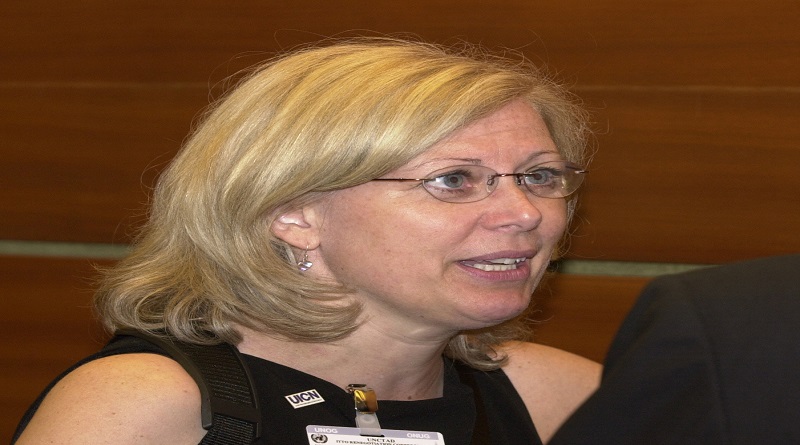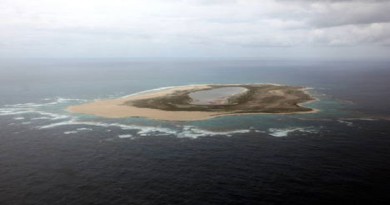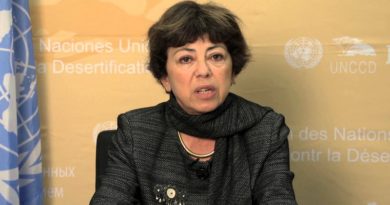NYDF report highlights linkages between forest landscape restoration, climate action
The latest progress report on the New York Declaration on Forests (NYDF), released today, emphasises the important role played by forest landscape restoration and the Bonn Challenge in achieving international climate targets. With COP22 just around the corner, Carole Saint-Laurent, Deputy Director of IUCN’s Global Forest Programme, looks back at the work done since the NYDF was launched and reflects on the way forward.
In 2014, more than 150 governments, NGOs, indigenous peoples groups, business associations and companies adopted the NYDF – an ambitious global agenda to protect and restore the world’s forests. Through its 10 goals, the NYDF created a timeline for countries to act on deforestation and degradation while simultaneously achieving key development targets. A new report – Progress on the NYDF: Achieving Collective Forest Goals – authored by an assessment group – has summarised key progress made on meeting the NYDF commitments and identified further actions needed to advance its targets.
Importantly, the NYDF endorsed the Bonn Challenge – a global goal to restore 150 million hectares of deforested and degraded land by 2020 –launched by a group of world leaders in 2011. The NYDF incorporated the Bonn Challenge 2020 target and extended it to 350 million hectares by 2030. The Bonn Challenge is enshrined in Goal 5 of the NYDF.
After the ratification of the Paris Agreement and the culmination of years of negotiations, leaders are now looking to turn policies into action. With its focus on multifunctional landscapes to bring multiple benefits, forest landscape restoration (FLR), which underlies the Bonn Challenge, is a solution – capable of supporting local communities and economies while enhancing carbon stocks and other valuable ecosystem services.
The NYDF report highlights that 114 UNFCCC parties have already submitted intended Nationally Determined Contributions (NDCs) containing land sector targets related to restoration, reforestation and afforestation. These 161.6 million hectares of NDC pledges could be aligned with the Bonn Challenge making a huge step toward reaching this global goal.
An important step in increasing restoration of deforested and degraded lands is for countries to recognise the interconnectedness of international targets and the opportunity for streamlined action to achieve multiple goals. Action on restoration in line with the NYDF and Bonn Challenge can also contribute to the achievement of the CBD Aichi targets, the land degradation neutrality goal and the SDGs.
There is also great value for decision makers to act upon synergies between the NYDF goals. Goal 2, for instance, focusses on eliminating deforestation from the production of agricultural commodities. Those commodities will have come from somewhere. The restoration of degraded lands has a crucial role to play in securing the sources of these commodities and can be deployed to support actions taken under Goal 2. Similarly, restoration of deforested and degraded lands under Goal 5 helps complement Goal 4 that seeks alternatives to deforestation driven by the needs of local communities – using restoration options such as agroforestry, on-farm trees and planting of native species would increase sustainable production and supply alternative incomes.
At COP22, IUCN will be launching a new set of resources to support decision makers in planning and implementing their restoration actions. With the support of the German Federal Ministry for the Environment, Nature Conservation, Building and Nuculear Safety, IUCN’s forest team is developing a progress-monitoring protocol called the Bonn Challenge Barometer. The Barometer will equip pledgers and partners with information to accelerate action and address implementation bottlenecks, and direct investors and donors towards opportunities.
This information and more will be available on a new online resource site, InfoFLR.org, launching at COP22. The InfoFLR website will feature a comprehensive package of information on more than 90 countries, including domestic targets, policies and programmes related to restoration; information on how restoration is dealt with in their NDCs and other plans; details on in-country assessments using IUCN and WRI’s Restoration Opportunities Assessment Methodology (ROAM); and news and resources on forest landscape restoration and the Bonn Challenge.
As COP22 draws closer, we’re reminded of the urgency of the situation. Over 1.6 billion people depend on forests landscapes, gathering food and fuel wood from them. These will communities grow even more vulnerable. And the ambitions of the Paris Agreement will not be fulfilled. Bolstered by the achievements outlined in the NYDF report, we’re optimistic that the talks in Marrakech will accelerate action on restoration, bringing us even closer to achieving the 2020 and 2030 Bonn Challenge and NYDF goals.
The Progress on the NYDF: Achieving Collective Forest Goals report was supported by the NYDF Assessment Coalition comprising CDP, Climate Focus, the Environmental Defense Fund (EDF), Forest Trends, Global Alliance for Clean Cookstoves (GACC), Global Canopy Programme (GCP), International Union for Conservation of Nature (IUCN), Rainforest Alliance, Stockholm Environment Institute (SEI), The Sustainability Consortium (TSC), Woods Hole Research Center (WHRC), World Resources Institute (WRI) and Global Forest Watch.




